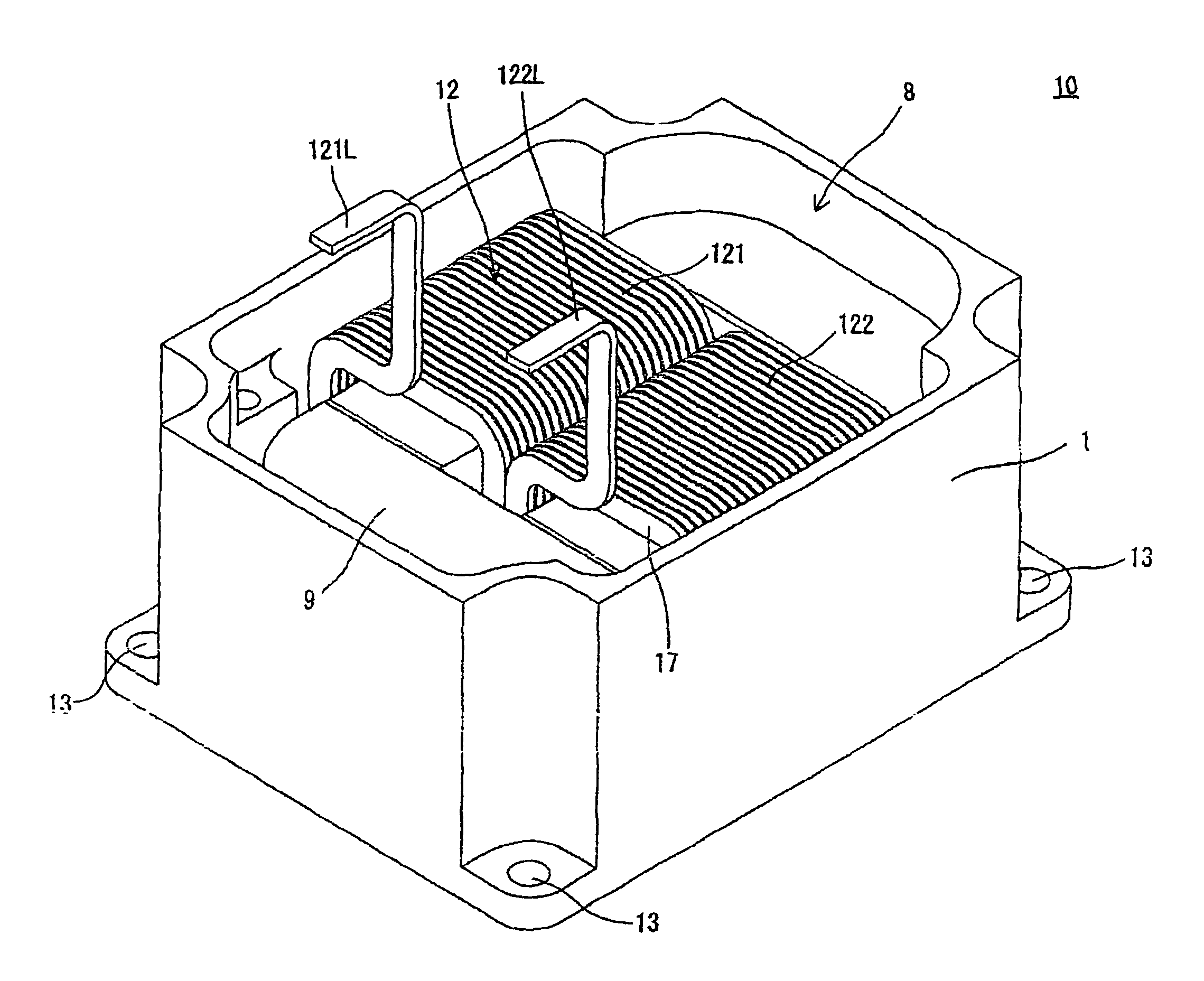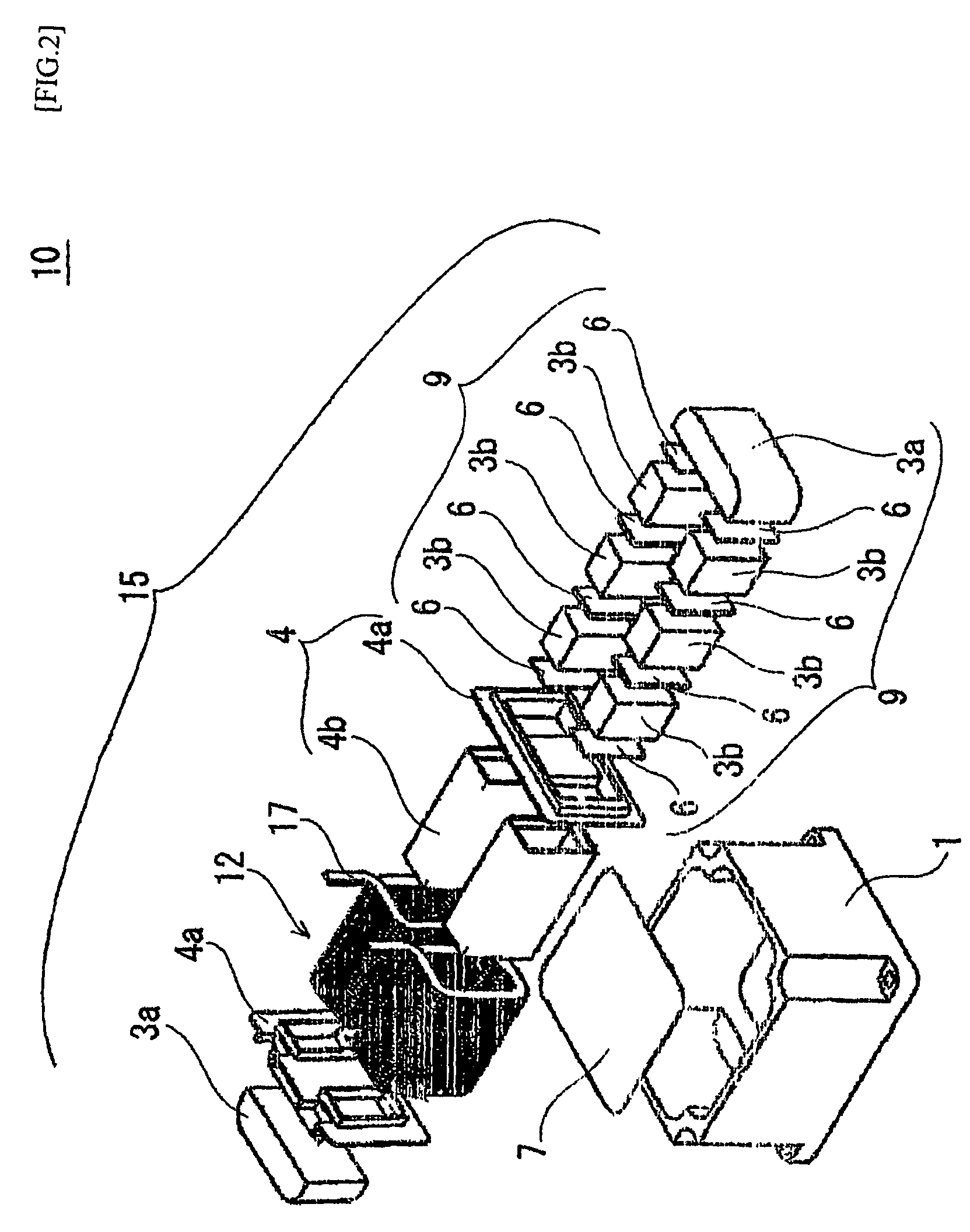Method for forming coil
a coil and coil technology, applied in the field of coils, can solve the problems of increasing the space occupied by the coil, increasing the cost of the coil, and the complexity of the manufacturing steps of the coil, so as to achieve high reliability and safety in the electrical characteristic, simplify the manufacturing work of the coil, and high accuracy
- Summary
- Abstract
- Description
- Claims
- Application Information
AI Technical Summary
Benefits of technology
Problems solved by technology
Method used
Image
Examples
Embodiment Construction
[0060]A coil of the first embodiment of the present invention is described in detail by referring to drawings. According to the first embodiment, the coil of the present invention is applied to a coil of a reactor (hereinafter, referred to as a reactor coil). FIG. 1 is a perspective view of a reactor as one example including the reactor coil of the present invention. The reactor 10 shown in FIG. 1 is used for an electrical circuit in a device having, for example, a forcedly cooling means and is configured so that, after a reactor coil 12 formed by winding one rectangular wire 17 around the reactor core 9 with a bobbin (not shown in FIG. 1) being interposed between the rectangular wire 17, and the reactor coil 12 is housed in a thermal conductive case 1, a filler 8 is poured therein so as to secure the reactor coil 12. Also, as is described later by referring to FIG. 3, the reactor coil 12 of the first embodiment includes the first coil element 121 and second coil element 122 each fo...
PUM
| Property | Measurement | Unit |
|---|---|---|
| voltage | aaaaa | aaaaa |
| length | aaaaa | aaaaa |
| inductance | aaaaa | aaaaa |
Abstract
Description
Claims
Application Information
 Login to View More
Login to View More - R&D
- Intellectual Property
- Life Sciences
- Materials
- Tech Scout
- Unparalleled Data Quality
- Higher Quality Content
- 60% Fewer Hallucinations
Browse by: Latest US Patents, China's latest patents, Technical Efficacy Thesaurus, Application Domain, Technology Topic, Popular Technical Reports.
© 2025 PatSnap. All rights reserved.Legal|Privacy policy|Modern Slavery Act Transparency Statement|Sitemap|About US| Contact US: help@patsnap.com



